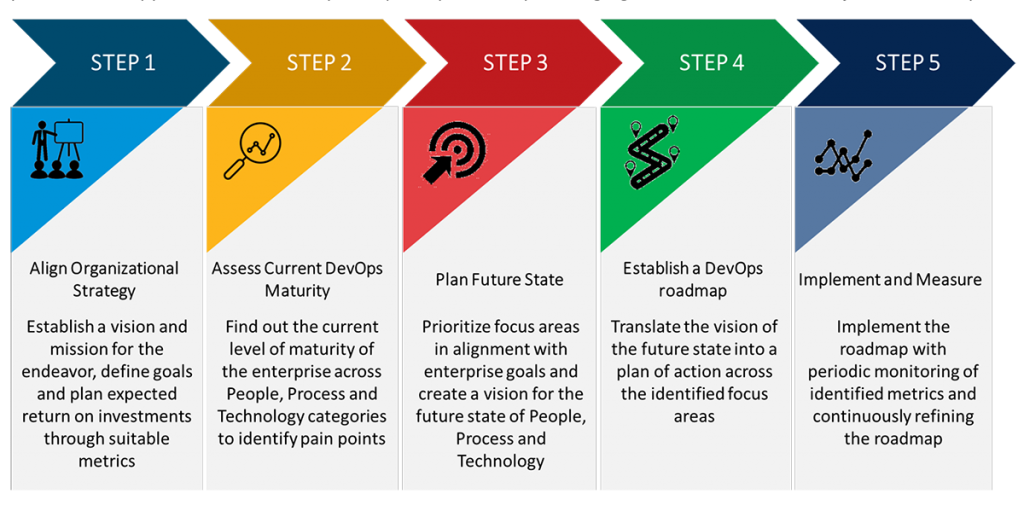The Five Steps to DevOps Adoption

DevOps need a concrete roadmap to succeed.
DevOps are being hampered by several persistent myths involving the people, processes, and technologies essential to the success of DevOps. Those myths are creating obstacles to successful DevOps deployment. It’s no surprise that only 20 percent of enterprises that have attempted to implement DevOps have fully deployed the process, according to CA Technologies. The low adoption rate is a shame because DevOps offer so much potential to enable customer-centric product development through collaboration.
Centific, working with an outside research firm, recently surveyed U.S. senior IT professionals involved in DevOps to find out why the adoption rate isn’t higher. After we analyzed the roadblocks to success (ranging from poor resource allocation to an inability to unify fragmented processes), we saw a common thread contributing to DevOps failures: a haphazard implementation of DevOps resulting from a lack of a structured approach. Consequently, we have defined a recommended five-step DevOps adoption process in newly published report, A Guide for Successful DevOps Adoption.
That process begins with aligning an organizational strategy before assessing a company’s DevOps readiness (or maturity); creating a vision for the future state of people, processes, and technologies affected by the deployment of a new product via DevOps; establishing a DevOps roadmap to translate the future state into an action plan; and implementing the roadmap against defined metrics. The following graphic from our guide outlines the five steps:

Most roadblocks to DevOps deployment pertain to managing tools, people, and processes effectively – especially people and processes. For instance, four out of the top five roadblocks relate to with personnel issues, such as a lack of relevant training and misalignment of responsibilities across people and teams. And the biggest obstacle comes down to poor allocation of resources.
Centific's five-step DevOps Adoption Process tackles those interrelated roadblocks. For instance, in the Align Organizational Strategy step, the business establishes a vision and mission for the endeavor, defining goals and suitable metrics to measure how well the organization meets those goals. Then, in Step 2, Assess Current DevOps Maturity, the business identifies its current level of maturity across people, processes, and technologies required for successful DevOps adoption. For instance, in defining DevOps people maturity, the organization will look for the existence of specialized training programs and shared responsibilities.
You may quibble with the steps we have outlined, but it’s important that you possess a structured approach, however you define it. As one executive from a Fortune 100 firm told us during our research,
We did not see the expected ROI from implementing DevOps practices. Following a more structured approach with clearly defined expected returns, goals and processes would have helped.
Now that you see what the roadmap to success looks like, it’s time to get started deploying DevOps the right way. Centific can help you. We work with enterprises to help them not only define their strategy but also their roadmap for ensuring that people, processes, and technology work in sync to develop products focused on customer needs. Contact us to get started and for a copy of A Guide for Successful DevOps Adoption.
